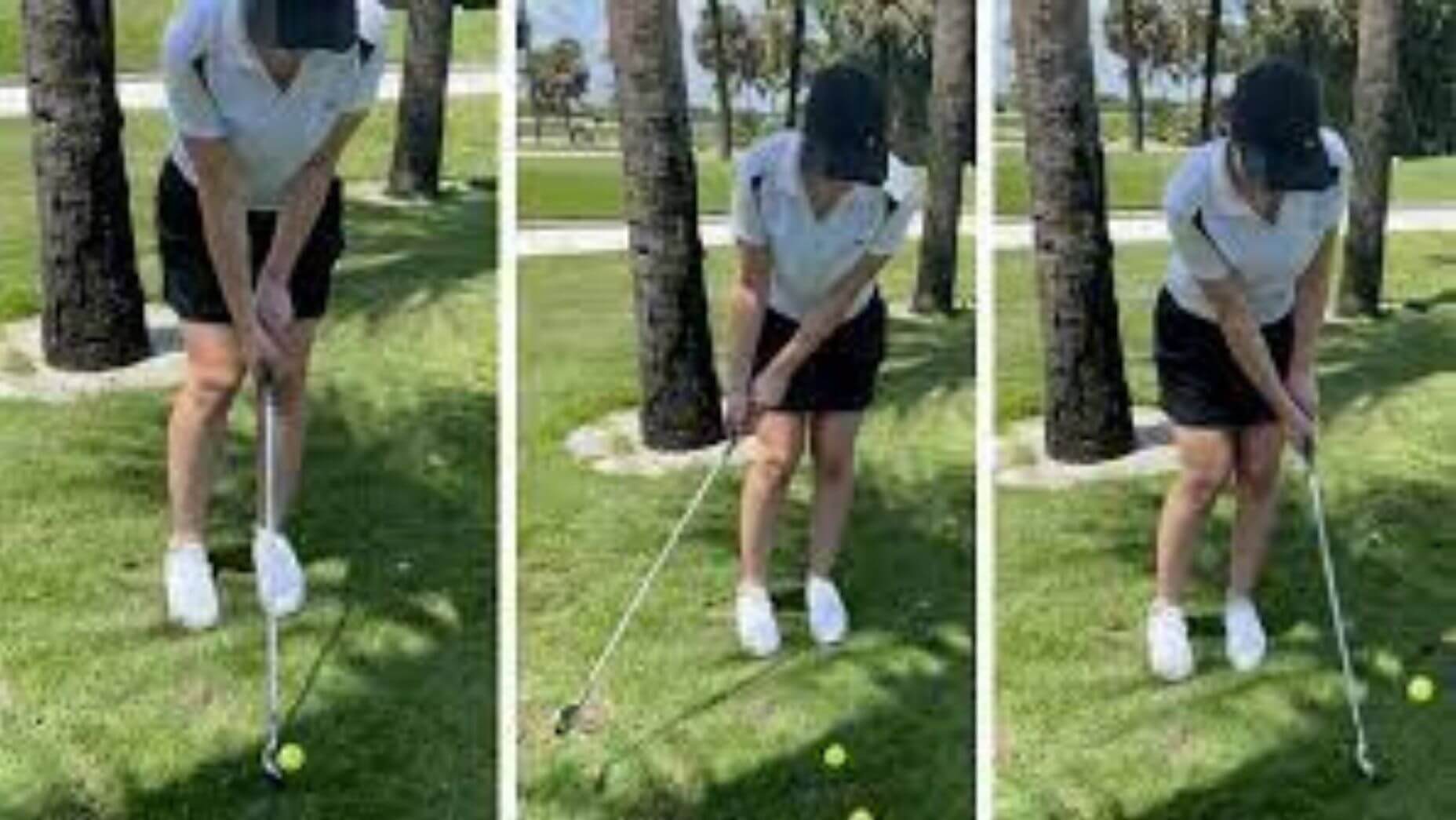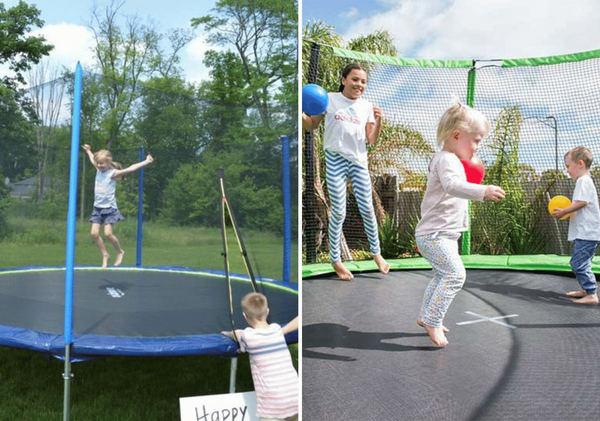Chipping is one of the most critical aspects of the golf game, and yet it is often overlooked. Many golfers focus on their long game and forget that chipping is where they can really shave strokes off their scorecard.
Chipping requires skill and finesse, and a few essential tips can help you improve your technique and confidence around the green.
The Aim of Chipping
The aim of chipping is to hit the ball with a short, controlled swing that sends it into the air and over an area you do not want the ball to roll over then land it softly on the green.
The goal is to get the ball as close to the hole as possible while avoiding hazards like bunkers and water. Good chipping can also help you recover from a bad approach shot and save par or bogey.
Key Thought When Chipping
When it comes to chipping in golf, simplicity is key. Many golfers tend to overthink the shot and become too focused on the outcome, which can lead to errors and poor results. Instead, try to keep your thoughts and approach to the shot as simple and straightforward as possible.
This will help you maintain a clear mind and make a more consistent swing.
A simple and repeatable chipping swing is one that you can execute consistently, regardless of the situation or shot you are facing. This involves finding a comfortable and natural setup that allows you to swing the club smoothly and fluidly.
Take the time to practice your chipping technique regularly, experimenting with different clubs and techniques until you find what works best for you.
Visualization is another key aspect of chipping in golf. Before taking your shot, take a few moments to visualize the shot you want to make.
This will help you focus your mind and body on the task at hand and prepare you mentally for the shot. Once you have visualized the shot, commit to it fully and trust in your technique and ability to execute it.
By keeping your approach to chipping simple and focusing on a repeatable swing, visualization, and commitment to the shot, you can improve your short game and become a more confident and consistent golfer.
Remember, chipping is all about finesse and touch, so stay relaxed and trust in your technique to make the shot. With practice and patience, you'll be able to master this critical aspect of the game and take strokes off your scorecard.
How to Chip
Chipping requires a different technique than a full swing or pitch shot, and there are a few key steps you can follow to improve your chipping.
Chipping Setup
First, set up correctly. Stand with your feet hip-width apart and your weight evenly distributed. (Some instructors will recommend putting 60% or more weight on your lead side, we think this leads to striking down on the ball too steeply).
Place the ball in the middle of your stance and position your hands over the ball with a slight forward shaft lean. This helps the club head strike the ball with it's bounce and makes it easier to get the ball up in the air.
You can have the ball position a little more right of center (for right handers) if it is a more comfortable fit for you.

Chipping Swing
Next, take a short backswing, keeping your wrists firm and your arms relaxed almost like a putting stroke. Focus on making a smooth, controlled swing through the ball with your upper body, keeping your head still and your eyes on the ball.
Allow your weight to shift to your front side as you would with any swing and let the club do the work.
Chipping Swing Thought
One helpful swing thought is to imagine that you are throwing a ball underhand towards the target.
This can help you keep your swing smooth and fluid, and avoid the common mistake of trying to scoop the ball into the air.
Controlling the Distance of Your Chip Shots
Controlling the distance of your chip shots is crucial to good chipping. One way to do this is to vary the length of your backswing.
A shorter backswing will result in a shorter shot, while a longer backswing will produce more distance. Experiment with different lengths of backswing to find the right distance for each shot.
Are the Backswing and Through Swing Always the Same Length?
No, your backswing and through swing don't have to be the same length. In fact, for shorter chip shots, a shorter backswing and a longer through swing can help to generate more spin and control.
For longer chip shots, a longer backswing and a shorter through swing may be more effective.
How to Practice Chipping
The best way to improve your chipping is to practice regularly. Set up a chipping area in your backyard or find a chipping practice green at your local golf course.
Practice different types of chip shots, including high shots that land softly on the green and low shots that roll out to the hole.
Focus on making solid contact with the ball and controlling the distance and direction of your shots.

Choosing the Best Club to Chip With
There is no one-size-fits-all answer to this question, as the best club to chip with will depend on the situation. Generally, a pitching wedge or sand wedge is a good choice for most chip shots.
However, for shorter shots to the green with a longer run, a 9-iron, 8-iron or even a 7-iron can be effective.
For longer chip shots that require travelling along the fairway before reaching the green, a hybrid or fairway wood may be the best option.
When to Chip with a 7, 8, or 9-Iron
Chipping with a 7, 8, or 9-iron can be very effective for chip shots where you need a forward or slightly descending blow to get the ball up in the air and hit the green quickly then have it run a longer distance to the hole.
I will sometimes use these clubs out of a little deeper grass next to the green for better distance control. The shorter irons require more power out of this grass to get the ball closer to the hole and often times end up running way past the hole or over the green.
When to Chip with a PW, SW, or Lob Wedge
A pitching wedge, sand wedge, or lob wedge is ideal for chip shots that require more loft and spin.
These clubs are great for shots where you need to carry the ball over a hazard or stop it quickly on the green. They are also useful for shots where you need to get the ball to stop quickly on a downhill slope or fast green.
How to Stop the Ball With a Chip
To make your chip shots stop quickly on the green, you need to generate enough spin on the ball. This can be achieved by hitting down on the ball and making solid contact with the ball's backspin. You can also take a slightly open stance and up the face of your wedge slightly, which will increase the loft and spin on the ball.
What's With the Shank Chip Shots?
Shanking chip shots can be frustrating, but it's a far too common problem among golfers. There are a few reasons why you might be shanking chip shots, including:
- Poor setup: Make sure you're standing with your feet hip-width apart and your weight evenly distributed. Position the ball in the middle of your stance and keep your hands over of the ball.
- Open clubface: If you're shanking the ball to the right, it could be because your golf club face is open at impact. Focus on keeping the clubface square to the target.
- Hitting too hard: The chipping stroke is all about finesse, and trying to hit the golf ball too hard can cause you to shank the shot. Focus on making a smooth, controlled swing through the ball.
- Tension: Tension in your hands, arms, or shoulders can cause you to shank chip shots. Stay relaxed and keep your swing smooth and fluid.
How to Chip – Conclusion
Golf chip shots are a critical part of the golf game, and by following these chipping golf tips, you can improve your technique and confidence around the green.
Remember to keep it simple, set up correctly, and focus on making a smooth, controlled swing through the ball.
Experiment with different golf clubs and backswing lengths to find the right distance and trajectory for each chip shot. Different golf balls can make a difference as well.
Practice regularly, and don't forget to visualize the shot you want to make and commit to it fully. With time and practice, you'll be able to master the short game and take strokes off your scorecard with your new and improved golf chipping technique.
Thank you for visiting, and we hope to see you back soon!







